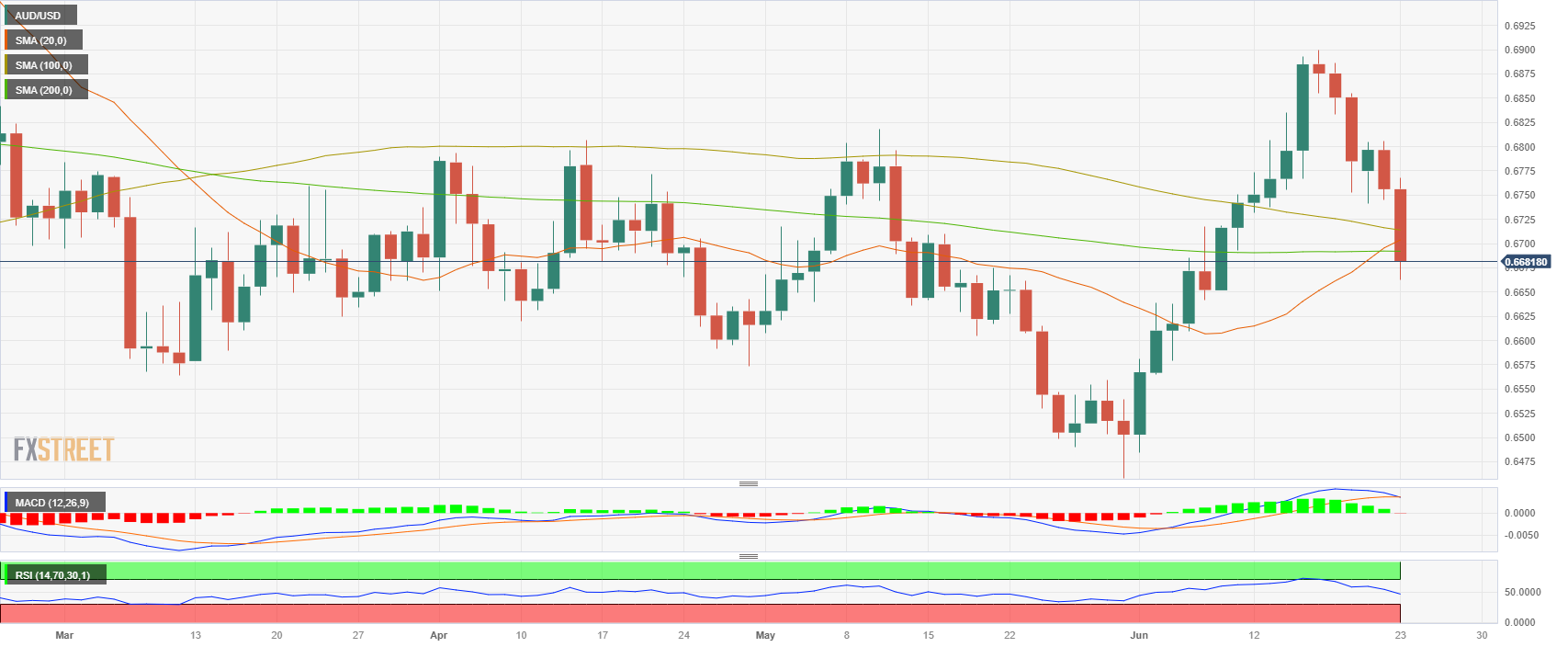AUD/USD falls to monthly low following US PMIs
|
- On Friday's session, the AUD/USD lost more than 1% pips and poised to closed a 2.9% weekly decline
- Negative market sentiment following mixed US PMIs from June weighs on the Aussie.
- Lower US bond yields and losses seen on Wall Street signal flightto-safety flows.
On Friday, the Aussie faced severe selling pressure and the AUD/USD fell to its lowest level since early June towards the 0.6660 area. In that sense, global economic downturn fears following weak UK and Eurozone PMIs, followed then by mixed US PMIs favored a sour market mood and hence benefited the US Dollar.
Investors assess preliminary June PMIs
On Friday, PMIs indicated mixed results for the US in the month of June, according to the S&P Global report. The Manufacturing PMI for June, fell to a five-month low, reaching 46.3, failing to live up to the expectations of 48.3. On the positive side, the Services PMI came slightly above the expectations at 54.1 vs the 54 anticipated by markets. Moreover, the Global Composite PMI dropped to 53 vs the 54.4 expected.
Adding to the negative market environment, the 10-year bond yield declined to a low of 3.70% while the 2-year yield fell to 4.70% and the 5-year to 4%, respectively. Moreover, the S&P 500 index (SPX) is seeing 0.6% losses, the Dow Jones Industrial Average (DJI) a 0.51% decline, and the Nasdaq Composite (NDX) a 0.92% loss.
Regarding the next sessions, attention now turns to next week’s Core Personal Consumption Expenditures (PCE) and Gross Domestic Product (GDP) data from the US where investors will get a clearer outlook of the economic activity and inflation in order to start modeling their expectations towards the next Fed meeting in July. On the Australian side, the focus is the Monthly Consumer Price Index from May.
AUD/USD Levels to watch
The AUD/USD holds a bearish outlook for the short term, as per the daily chart. The Relative Strength Index (RSI) and Moving Average Convergence Divergence (MACD) both fell to negative territory, and below the 20,100 and 200-day Simple Moving Averages (SMAs). The negative outlook is also seen in the weekly chart where the pair is set to posit the largest weekly decline since March.
In case the AUD/USD loses more ground in the 0.6640 zone, the 0.6620 area and psychological mark at 0.6600 could come into play. On the flip side, the following resistances line up at the 200-day SMA at 0.6690, followed then by the 20-day SMA at 0.670 and the 100-day Simple Moving SMA at 0.6712.
AUD/USD Daily chart

Information on these pages contains forward-looking statements that involve risks and uncertainties. Markets and instruments profiled on this page are for informational purposes only and should not in any way come across as a recommendation to buy or sell in these assets. You should do your own thorough research before making any investment decisions. FXStreet does not in any way guarantee that this information is free from mistakes, errors, or material misstatements. It also does not guarantee that this information is of a timely nature. Investing in Open Markets involves a great deal of risk, including the loss of all or a portion of your investment, as well as emotional distress. All risks, losses and costs associated with investing, including total loss of principal, are your responsibility. The views and opinions expressed in this article are those of the authors and do not necessarily reflect the official policy or position of FXStreet nor its advertisers.